SWEET MUSIC
Neighborhood kids help me lift the fallen limb from the car. Impressive, a good 20-feet long, diameter of five inches where it cracked and fell, cushioned by lower limbs, onto the roof and hood of the car. The fallen limb falls as what it was, a tree branch. The neighborhood shows up and drives by, my neighbor, who lost her husband, my friend of 30 years. The neighbor with cancer undergoing chemo, the neighbor who complained when I left water running all night. The hood of the old Subaru has several new punchouts that will never see an autobody repair shop, but that's the extent of the damage to the car. But what about the Sweet Gum Tree? What's going on up there? Up high, what's going on. How's our old tree doing?
Sweet Gum limbs easily give to the hand saw. Trees make flooring too. I'm working on all this, inside/outside when the pickup pulls up. It's the young arborist from six years ago. You're the same one. I look at my neighbors. This tree, and this young man. We talked six years ago under this tree. We talked Coltrane, jazz, structure and God. We talked family. Conversation doesn't get better than the one we had. I'm lecturing. I know that. Tell me what's going on.
"Career track. Three years. I was dying. I'm back in trees."
He asks if he can carry away the branches and the fallen limb. Only if you'll come back and talk. Only if we can talk like we did about God and music and trees. Only if you'll do that. Say that again about the wind and pathways through a tree.
And how do you remember this conversation? Am I accurate in my memory? Am I talking truth?
I tell the neighbors again. This is what's possible between strangers knocking on the door.
I've not seen you, I say, in six years. I was working on this poem when you knocked on the door. You became part of that poem. You never knew. The poem couldn't have happened without you. I'll look for it. No one has ever seen it. It's somewhere in the computer. I'll find it before you come back.
You can only go up that tree for pay. As the arborist you are.
This tree is part of this house. The tree before I planted a tree. The tree after I took trees out. The tree that greeted my children as they were born. That my children climbed watching me roof the house after my father died. This tree. This house. Thirty-eight years in this house. This tree, estimated at 80 years, planted in the early days of the house itself, when the neighborhood was new, a Catholic working class neighborhood built around St. Paul's Cathedral Church.
Karen and I have been in this house for 38 years. We were 27 years old when we moved in during the late summer of 1972. Figure that out. It was the first house we looked at. Big trees outside. The railing upstairs on the inside. It cost less than a new car. Today, it's still not paid off. College loans. Travel. Daily life.
The Sweet Gum Tree is on the parking strip on 15th Avenue. We live on the corner of 15th Avenue and Bell Avenue. When we moved in, still kids ourselves, it was just a tree. We had a row of maple trees on Bell Avenue at that time, and I thought it was a maple. Our daughters weren't born yet, and our son was a year out of diapers. There were lower limbs they would be able to reach as they grew into them. This became the tree they learned to climb in. City workers and citizen complaints would take those lower limbs as the tree grew, as we grew into our lives. As the tree grew, along with our children, it became inaccessible to climbing, except by professionals, and professionals found it. We learned enough to have the pros shape the tree, never letting butchers in, and the tree became part of the neighborhood's beauty.
The tree had a split trunk, and we'd had those trunks belted about 50-feet up so that trunks held, and worked together. That's one of the things the young arborist taught me six years ago. The arborists found this tree. They loved it. One who lived nearby at the time, Charles, would talk with me about the urban forest, and its decay in our city. He would sometimes ask to climb it and look around. He'd strap on his belt and ropes. Charles was a pro. Careful. One year, before we knew better, early in our marriage, we had cowboys roped up and swinging from limb to limb with roaring chainsaws swinging from our big trees. That was enough. Charles knew about cowboys. He would take out dangerous limbs during winter freezes. He didn't take chances, but he spoke as a prophet for the Sweet Gum Tree. Don't let City Hall take that tree. Don't let them take it to save the sidewalk, either. Let the roots take out the sidewalk. When roots raise the street they make a speed bump. That was Charles' message.
The Sweet Gum Tree arcing over 15th Avenue. The Sweet Gum shading our front yard in hot Yakima summers. Sweet Gum cooling our old house. Raking the leaves in Fall. Learning to bag them for composting, turning them into harvest, food for flowers. Sweetgum, also known as redgum, star-leaved gum, alligator-wood and gumtree. Five-star leaves, clothlike in summer and brilliantly orange and purple in Fall. And the woody, spiny, ball-like fruit for birds, maturing over winter, dropping on the lawn in spring dulling lawnmower blades. Yes, field guides say that pioneers peeled the bark and scraped the resin for chewing gum.
In the summer when the Second Iraq War was just beginning, I was working on a poem, listening to John Coltrane when the doorbell rang. It was the young arborist. The one who pulled up just now. He wanted to take a look. He did. We gave him some work. He did a fine job cleaning out the tree. He talked about creating pathways for wind through trees. He said those two trunks would work together. He talked spirit. I talked Coltrane. An artist friend had just given me his large, epic painting of Coltrane before returning to the South. Coltrane on canvas. Full of gold paint. Coltrane as pure color. All spirit. Another friend had just given me the Complete Atlantic Recordings of Coltrane. Seven Discs. The young arborist didn't know he had become an important part of that poem, becoming part of my life. No one ever saw that poem. Here he was again, six years later to the day, showing up to look at that tree again, minutes after the kids and I had lifted that limb off from the top of my car.
Here's that poem:
●
ALONE IN THE HOUSE WITH COLTRANE
Lift the music into your own life.
Reggie Workman says
I used to follow John like you would follow the sun.
I'm listening, sitting with dogs.
How can I be alone?
The clarinetist Don Byrun talks musicians.
Lift the music into your own life
If a cat is taking risks at a moment,
years later you can still hear the edge of it.
I'm looking at gold paint Rex put everywhere—
in Coltrane's shirt, into the saxophone itself.
Four song titles criss-cross
their way through four bronze portraits of Trane.
The seeker is always alone.
Rex knew he was going back to Arkansas
when he gave me this painting.
The tree pruner knocks on my door.
We talk about the Sweet Gum Tree
overlooking the Garden Room in the front yard.
Stems blow out of phase in old trees like this.
Blowing in and rebounding,
instances of giant limbs pulling apart
under strong forces are rare.
Support at the extremeties moves them
where they want to move.
Do you know Coltrane, I ask.
Coltrane follows the line to see what it will bear.
He adds drummers and saxophones,
as well as bells, to be limbs and branches,
to see what will happen in wind.
You turn those trees into music.
I need to be in wind. When I'm in a tree
I'm searching those underlying principles—
the bones underneath it all. The pruner
knows the story knowing other music.
I grew up in a house with no rules.
Vibrations and harmonies
cross-platforms to growing things.
I know the language of jazz and trees.
Eric Nissensen writes ascension
before the end of jazz before this:
Baseball, Jesus Seminar, textual criticism.
Three sources and the truth will set us free.
No compromises. The conversation
Coltrane would have chosen to have.
The one no one asked for.
Criticism as trance. The way Hugh Kenner
helped us with Pound. Or Taylor Branch with King.
An era as much as a man.
For the poet, the poem is already an artifact.
Write what you know and then write above that.
Starting every morning with Coltrane.
Work brings el duende against our will.
Credulity is in short supply.
Nissensen's careful word on Jarrett and Marsalis.
What he says about Miles:
He never got over losing John.
I write my son about Hendrix.
Nothing could have prepared us for Bush the Younger.
Coltrane wouldn't recognize anger as anger.
Anger wouldn't make any sense to him.
Jim Bodeen
Oct 1-13, 2004—October 2-8, 2010
●
Tree falls from the sky
Not arriving as a spear
Slow down, Grandfather
Jim Bodeen
5 October 2010
Subscribe to:
Post Comments (Atom)





















































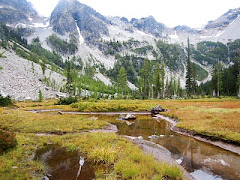


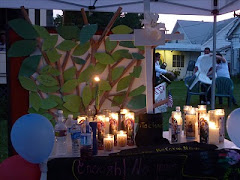






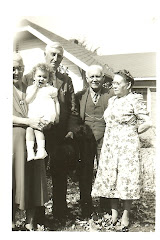
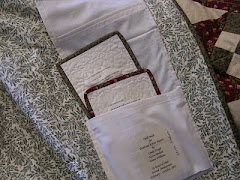








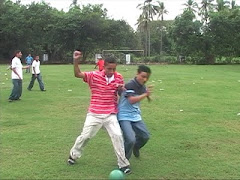
Great chronicle and unearthing of poem that found its time and light and wind. kjm
ReplyDelete